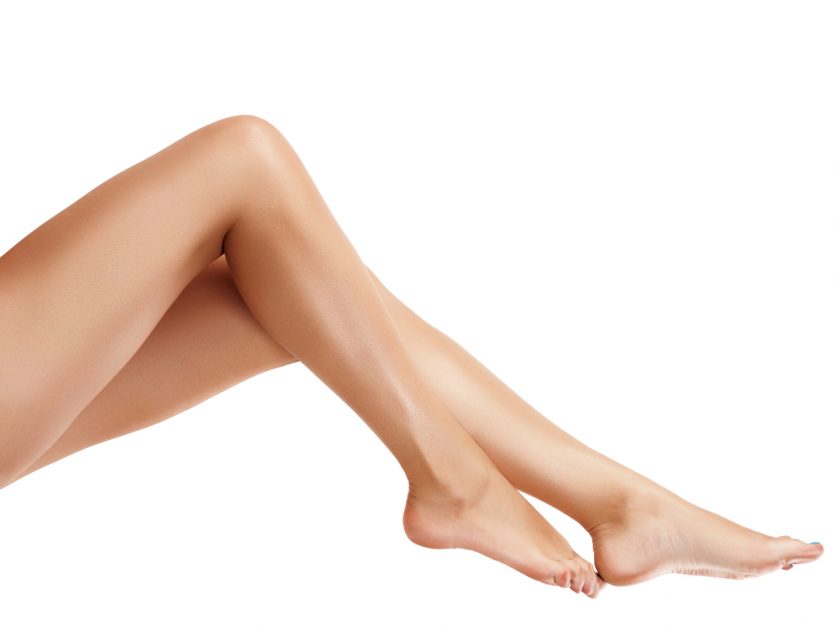Ankle Appeal: Redefining Silhouettes with Calf and Ankle Liposuction
Posted on: January 31, 2024
Calf and ankle liposuction is a tailored solution for individuals seeking to reshape these specific areas, offering a way to address stubborn fat that resists diet and exercise. This procedure promises a contoured lower leg silhouette, enhancing overall proportions. By targeting the calves and ankles, it can provide newfound confidence through refined contours. As you consider this cosmetic intervention, understanding its implications on your physique and well-being is crucial.
Understanding Cankles and Their Causes
Cankle Traits
Cankles, a term blending ‘calf’ and ‘ankle,’ describe legs where the calf doesn’t taper down to the ankle. Cankles lack definition between these two parts of the leg. This can lead to a feeling of self-consciousness for some.
People with cankles might notice their lower legs have a straighter outline rather than a narrow ankle. The visual effect is that of no distinct separation from the calf to the foot.
Contributing Factors
Several factors contribute to cankle formation. Some individuals may be predisposed due to their genetic makeup, while others might develop them through lifestyle choices.
- Genetics: A person’s family history can influence body shape, including leg structure.
- Lifestyle: Weight gain or fluid retention often results in added bulk around ankles.
Genetics play a roleWhich includes how fat is distributed around knees and lower legs. If parents or close relatives have cankles, there’s an increased chance one will too.
Lifestyle causes include being overweight or leading an inactive life. These factors cause excess fat accumulation not just around the stomach but also near ankles—contributing significantly towards forming cankles.
Genetic Versus Lifestyle
It’s crucial to understand whether genetics or lifestyle habits are at play because this influences treatment approaches for those seeking changes like calf and ankle liposuction.
- Genetic causes: May require surgical intervention as diet and exercise might not suffice.
- Lifestyle-related causes: Often addressed by adopting healthier habits such as regular exercise and balanced nutrition before considering surgery.
In cases where weight management does improve appearance but doesn’t fully resolve concerns about cankles, procedures like liposuction could be considered as an additional measure.
Overview of Calf and Ankle Liposuction Procedure
Surgical Steps
Liposuction for the calves and ankles involves a series of steps. First, small incisions are made in the targeted areas. Through these incisions, a solution is infused to minimize bleeding and ease fat removal.
Next, a thin tube called a cannula is inserted. The surgeon moves it back and forth to loosen excess fat, which is then suctioned out of the body. This process reshapes the contour of the calf and ankle area.
Anesthesia Types
For comfort during liposuction, anesthesia is essential. There are two main types used:
- Local anesthesia numbs only the surgery site.
- General anesthesia puts you completely to sleep.
The choice depends on various factors including patient health, preference, and extent of surgery.
Surgery Details
Calf and ankle liposuction typically takes about one to two hours but can vary based on complexity. It’s an outpatient procedure meaning patients go home the same day.
The setting for this surgery is usually in a hospital or accredited surgical facility equipped with proper tools for safe operation. Afterward, recovery begins at home with detailed care instructions from your surgeon.
Preparing for Calf and Ankle Liposuction
Medical Evaluations
Before ankle liposuction, doctors will need to assess your health. They may request blood tests or a physical exam. This ensures you’re fit for surgery.
Patients might undergo scans of their legs. These highlight structures like the saphenous vein or nerve locations. Such details help surgeons avoid complications during liposuction.
Lifestyle Adjustments
Making changes to your routine is crucial before surgery. Doctors often advise quitting smoking as it can affect healing. Also, maintaining a stable weight is important.
You may be asked to wear compression stockings pre-surgery. They reduce the risk of swelling, known as edema, in the lower legs post-operatively.
Medication Guidance
Your surgeon will give clear instructions on medications.
- Some medicines should be stopped before surgery due to bleeding risks.
- Others might be necessary for managing conditions unrelated to the procedure.
Fasting is usually required hours before surgery to prevent anesthesia-related issues.
Remember, following these steps closely improves safety and results in calf and ankle liposuction procedures.
Recovery Timeline After Calf and Ankle Liposuction
Initial Care
After undergoing calf and ankle liposuction, the first few days are crucial. Patients typically experience swelling, bruising, and discomfort. It’s essential to follow your surgeon’s advice on post-operative care. This often includes:
- Resting with legs elevated
- Wearing compression garments
- Taking prescribed medications
Rest is vital during this stage to aid healing.
Healing Milestones
As weeks pass, you’ll reach important healing milestones. By the end of week one, you should notice a reduction in swelling. Most patients can return to work within 7-10 days if their job isn’t physically demanding.
By week three or four, many see significant improvements as the body adapts and heals from surgery. However, it’s still important to avoid strenuous activities that could strain the legs.
Long-Term Expectations
The full benefits of calf and ankle liposuction may take several months to become apparent as your body continues to heal internally. For long-term recovery:
- Maintain a healthy lifestyle.
- Follow-up with your doctor regularly.
These steps will ensure optimal results from your procedure.
Potential Risks and Side Effects
Common Complications
Calf and ankle liposuction, like any surgery, carries risks. Major complications can include infections, irregularities in skin contour, and even the formation of blood clots. It is essential to recognize symptoms such as excessive redness, pain beyond the expected level, or unusual discharge from the incision sites.
Patients should also be aware of less common issues that may arise post-surgery. This includes hormonal imbalances which could affect other body areas or overall health.
Monitoring Symptoms
After undergoing calf and ankle liposuction, one must watch for adverse reactions diligently. Key signs include:
- Swelling that does not reduce over time.
- Color changes in the operated area.
- Fever indicating possible infection.
These symptoms require immediate medical attention to prevent serious complications.
Surgeon’s Guidelines
Following your surgeon’s guidelines is critical for a safe recovery. They provide instructions tailored to your specific needs considering various factors such as weight and pre-existing medical conditions. These directions often cover:
- Medication regimen.
- Activity levels during recovery.
Ignoring these steps can increase risk levels significantly.
Expected Results from Calf and Ankle Liposuction
Contour Improvements
After calf and ankle liposuction, patients can expect a more sculpted appearance. The procedure removes fat pockets that cause bulges. This leads to smoother leg lines.
The results vary by individual. Some see dramatic changes, while others notice subtle enhancements. It all depends on the amount of fat removed and body type.
Result Timeline
Visible outcomes take time after surgery. Initial swelling must subside first. This often takes several weeks.
A more accurate picture emerges within three to six months post-op. By then, most swelling has gone down, revealing the final shape of the calves and ankles.
Expectation Management
It’s crucial to have realistic expectations before undergoing liposuction. Surgeons work with patients to set achievable goals based on their unique bodies.
Patients should understand that liposuction is for contouring, not major weight loss. It refines shapes rather than drastically altering them.
Ideal Candidates for the Procedure
Health Status
Good overall health is crucial for anyone considering calf and ankle liposuction. Plastic surgeons screen patients to ensure they are fit for surgery. This often involves a review of medical history and current health conditions.
Patients must be free from serious illnesses or medical conditions that could complicate surgery or recovery. For instance, those with venous insufficiency may face higher risks during this procedure.
Psychological Readiness
Being psychologically prepared is as important as physical health. Patients should have realistic expectations about the outcomes of calf and ankle liposuction.
A positive mindset contributes to a smoother recovery process. It’s essential that patients understand both the benefits and limitations of the procedure.
Suitability Criteria
The criteria for being a good candidate include more than just having an interest in improving specific areas through cosmetic surgery. During a consultation, plastic surgeons evaluate factors like skin quality and body shape.

For example, younger patients typically have more elastic skin which can adapt better post-surgery compared to older individuals.
Plastic surgeons also assess whether potential candidates have stable weight since fluctuations can affect results negatively.
Combining Liposuction with Other Treatments
Synergistic Effects
Liposuction, specifically calf and ankle liposuction, often pairs well with other procedures. This combination can enhance body contours dramatically. It’s not just about removing fat but also sculpting the area to achieve a harmonious look.
Patients might combine lipo with skin tightening treatments for improved results. These combinations can reduce sagging that sometimes follows fat removal. The synergy between liposuction and skin tightening leads to smoother, more youthful-looking legs.
Complementary Procedures
There are several popular treatments that complement calf and ankle liposuction. For instance, thigh lipo or knee contouring may be done in the same session. This creates balance from the ankles up through the thighs.
Another option is pairing it with cellulite reduction techniques. By addressing both excess fat and cellulite, patients can enjoy comprehensive improvements in leg aesthetics.
Multiple Surgery Planning
When planning multiple cosmetic surgeries, there are key considerations to keep in mind:
- Safety should always come first.
- Patients must account for a potentially longer recovery time.
- Surgeons will evaluate if combining procedures poses any risks.
It’s crucial to consult with a qualified surgeon who has experience in performing combined treatments safely.
Closing Thoughts
Calf and ankle liposuction emerges as a specialized solution for reshaping lower legs, offering individuals a path to address concerns that diet and exercise alone may not resolve. We’ve explored the intricacies of the procedure, from understanding the stubborn nature of cankles to discussing the recovery process and expected outcomes. Candidates considering this surgery now have a framework to gauge its suitability for their unique circumstances, alongside an awareness of potential risks.
As you contemplate enhancing your leg contour through liposuction, remember to consult with a board-certified surgeon who can provide tailored advice and ensure optimal results. Embrace the journey towards achieving your aesthetic goals with confidence and informed decisions. For further guidance or to schedule a consultation, take the next step and contact a reputable clinic today.
Frequently Asked Questions
What causes cankles?
Cankles are often the result of a lack of definition between the calf and ankle due to excess fat or fluid retention.
Is calf and ankle liposuction safe?
Yes, it is generally safe but carries potential risks like any surgical procedure. Consult with a qualified surgeon to understand these risks.
How should I prepare for this type of liposuction?
Preparation involves a medical evaluation, avoiding certain medications, and arranging for post-procedure support.
What is the recovery time for calf and ankle liposuction?
Recovery typically takes several weeks, with most individuals returning to normal activities within 2-6 weeks.
Are there side effects associated with calf and ankle liposuction?
Yes, common side effects include swelling, bruising, numbness, and discomfort in the treated areas.
When will I see results from my calf and ankle liposuction?
Results may be visible after swelling subsides significantly; full results typically emerge within several months.
Who is an ideal candidate for calf and ankle liposuction?
Ideal candidates are non-smokers in good health with realistic expectations who haven’t achieved desired results through diet and exercise.





